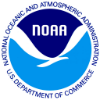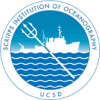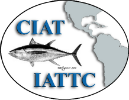Spatio-temporal modelling Mini-Workshop
The Center for the Advancement of Population Assessment Methodology (CAPAM) hosted a technical mini-workshop on the development of spatio-temporal models of fishery catch-per-unit-effort data to derive indices of relative abundance in La Jolla, CA, USA, February 26-March 2, 2018. The workshop was financially supported by the International Seafood Sustainability Foundation (ISSF), the National Marine Fisheries Service (NMFS) South West Fisheries Science Center (SWFSC), and the Inter-American Tropical Tuna Commission (IATTC).
Properly accounting for the spatio-temporal distribution of both fishing effort and fish abundance has been one of the largest sources of uncertainty in using CPUE as an index of relative abundance. Of particular concern is the change in spatial distribution over time due to movement of the stock, recruitment dynamics, or local depletion. Compounding the historical treatment of CPUE data is the component of the population that is represented by the index with respect to age or size. Within integrated assessment models, this population component is modelled using a selectivity curve that is estimated by fitting to composition data. For fleets with both catch and CPUE included in the assessment model, the estimated selectivity curve represents both the age structure of the catch as well as the index of abundance. However, these may differ due to a mismatch between the spatial distribution of the catch compared to the spatial distribution of the population, when the age structure of the population varies spatially. One solution to this issue is to use the same spatio-temporal model, extended to include age, and weight the estimates by catch and area, respectively. There has been substantial recent progress made in both the statistical methodology and the practical implementation (e.g. software) of spatial-temporal models. However, there has been less work focused on the specific issues related to use in fisheries stock assessment. Focused discussions and consequent research is needed to make the most of this modelling technique. The format of the workshop followed that of the successful CAPAM series with a specialized technical focus and allowing ample time for presentations and discussion.
Topics (and Key notes) included in the workshop were:
- Basic concepts (Jim Thorson, NMFS, USA),
- Statistical issues (Hans Skaug, University of Bergen, Norway),
- Computational issues (Kasper Kristensen, Technical University of Denmark),
- Issues highlighted by applications (Toshihide Kitakado, Tokyo University of Marine Science and Technology, Japan),
- Issues relating to including results in stock assessments (Rick Methot, NMFS, USA),
- Non-fisheries perspective by Christopher Wikle (University of Missouri, USA).
- Alternative methods (Nicole Augustin, University of Bath, UK)
- Spatial autoregressive models (Jay Ver Hoef, NOAA-NMFS Alaska Fisheries Science Center, USA)
The workshop was attended by 75 onsite participants and around 20 online participants. A total of 25 talks including keynotes were presented, presentations are available here.
For information concerning the workshop, please contact the Chair Mark Maunder (mmaunder@iattc.org), and visit the CAPAM website (www.CAPAMresearch.org) for updated information.
Location: Southwest Fisheries Science Center, La Jolla, CA 92037, USA
Presentations
Agenda:
Announcement:
Background information document:



